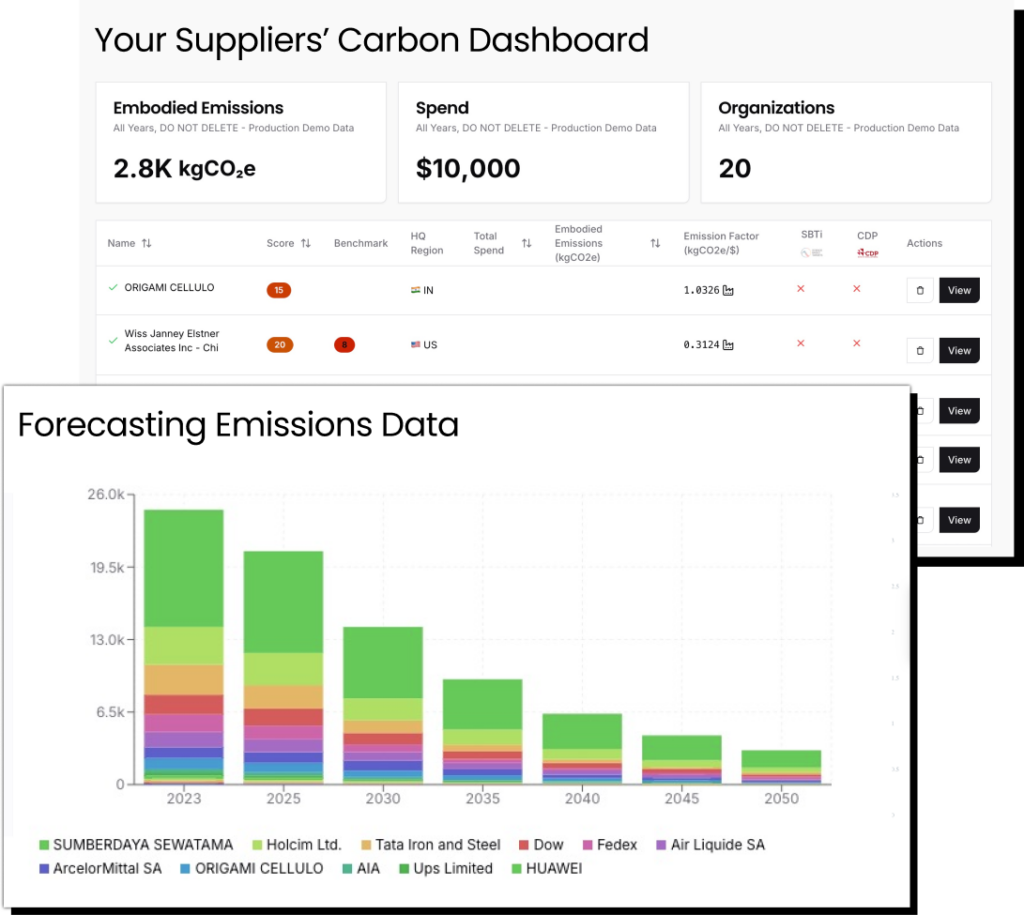For procurement professionals aiming to engage low-maturity suppliers in emissions measurement, reporting, and target setting, here are specific, actionable steps:
1. Supplier Assessment and Segmentation
– Conduct a Supplier Maturity Assessment: Use a simple survey or questionnaire to assess the current maturity level of your suppliers in terms of sustainability practices. Focus on their understanding and capabilities in measuring and reporting emissions.
– Segment Suppliers: Based on the assessment, categorize suppliers into different maturity levels. This helps in tailoring your approach and resources effectively.
Resource: We’ve built a simple survey to get you going
2. Develop and Provide Tailored Training and Tools
– Tailored Training Programs: Develop training modules that are specific to the maturity levels of your suppliers. For low-maturity suppliers, focus on basic concepts of emissions measurement and reporting
– Simplified Tools and Templates: Create or source easy-to-use tools for emissions tracking and reporting. These should be in line with GHG Protocol guidelines but simplified for beginners.
Resource: SME climate hub is a great place to start for both of these
3. Set Up a Support System
– Dedicated Support Team: Establish a small team or point of contact within your organization to assist suppliers. This team should handle queries and provide guidance on emissions measurement and reduction strategies.
– Regular Check-ins and Workshops: Schedule periodic meetings or workshops to discuss progress, challenges, and provide additional support or training as needed.
4. Collaborative Goal Setting and Action Plans
– Jointly Set Emission Reduction Targets: Work together with your suppliers to set achievable emission reduction targets, using the SBTi framework as a guideline.
– Action Plan Development: Assist suppliers in developing an action plan for emissions reduction, including short-term and long-term strategies.
Resource: SBTI’s guide to engaging suppliers is excellent
5. Monitor, Report, and Recognize Progress
– Regular Monitoring and Reporting: Implement a regular schedule for suppliers to report their emissions data. Review this data to monitor progress against set targets.
– Recognition and Incentives: Acknowledge and reward suppliers who make significant progress in their sustainability efforts. This could be through recognition programs, preferential procurement terms, or other incentives.
Real Example:
– Hewlett Packard Enterprise (HPE)’s Supplier Engagement: HPE has effectively engaged its suppliers in sustainability practices. They assess supplier maturity, provide targeted training, and collaborate on setting and achieving carbon reduction goals, leading to a more sustainable supply chain.
Do This Next:
– Initiate a Supplier Maturity Assessment: Begin by assessing the current sustainability maturity of your suppliers.
– Develop Training and Support Structures: Based on the assessment results, start developing tailored training programs and setting up a support system.
Implementing these steps will ensure a structured approach in engaging low-maturity suppliers towards effective emissions measurement, reporting, and reduction.
